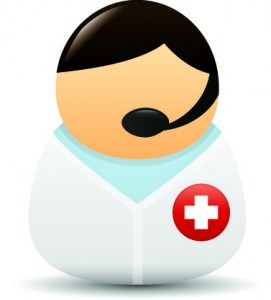Healthcare with Confidence
Esophageal cancer is a relatively rare disease, but its prevalence increases with time.
The most common disease in Europe and North America. The disease is more common in men and occurs primarily in adults.
Prof. Dan Aderka – Chairman of the Gastrointestinal Cancer Service. Head of GI Biology and Immunotherapy Program Sheba Medical Center. Head of the Gastrointestinal Cancer Unit at the Assuta leading private hospital.
Consultant – Cell Regulation Department, Weizmann Institute. Member of the European group for international treatment guidelines development for colorectal tumors. Doctor Second Opinion Online
Professor Baruch Brenner – Head of the Department of Gastrointestinal tract Oncology, Rabin Medical Center (Beilinson)
Dr. Maor Lahav – Head of the Department of invasive endoscopy, Gastroenterology Unit, Chaim Sheba Medical Center, Tel Hashomer. Chief Specialist, Gastroenterology Institute of Assuta Medical Center.
There are two types of esophageal cancer – squamous cell carcinoma and adenocarcinoma. Medical practice indicates that adenocarcinoma is more common in people who suffer from hyperacidity, stomach contents cast into the esophagus for a long time. Damage to the esophagus caused by acid also called “Barrett’s esophagus”. This is not a cancer, but over time, a small proportion of patients with this disorder may develop esophageal cancer.
Another type of esophageal cancer, squamous cell carcinoma, is more common in smokers, individuals who consume large amounts of alcohol or suffering from malnutrition.
Other factors influencing the esophagus like achalasia (loss of contractility) of the esophagus can also lead to malignant disease. Achalasia is a condition in which the muscles controlling the opening between the esophagus and the stomach does not function properly, so the food is stored in the esophagus and reaches the stomach.
In most of patients cancer of the esophagus caused by a defective gene. A very small proportion of patients also has a rare genetic skin disease, as keratoderma, which yields a thickening of the stratum corneum, thus can develop cancer of the esophagus.
The most common symptom of esophageal cancer – difficulty swallowing (dysphagia). Most patients feel that food gets stuck on the way to the stomach, even if ingested liquid well. There is also a weight loss or pain and discomfort in the chest or back. Some patients complain of heartburn or coughing.
Diagnosis of esophageal cancer
Diagnosis begins with a doctor’s consultation, which will make medical history and perform a physical exam. It is mandatory blood test and chest X-ray to assess the overall health status.
Endoscopy. This test allows doctor to look directly into the esophagus using a thin flexible tube endoscope. At the end of the endoscope is placed a miniature camera is accompanied by a light source. During the examination the doctor takes a sample of cells (biopsy) for microscopic examination.
Gastroscopy usually performed in an outpatient clinic and requires purification of the stomach for 8 hours prior to testing.
Additional tests
If the test indicates esophageal cancer, the doctor refers the patient for further research, which will help a specialist to diagnose the disease severity (or stage of the tumor), and adopted a decision on the most effective method of treatment.
Computed tomography. This is a complex method of x-ray that builds a three-dimensional image of the inside of the body. Scanning is painless, but lasts longer than X-rays – about 10 – 30 minutes).
Endosonography. This test is identical to gastroscopy, except that the tube at the tip of the tiny ultrasound probe is installed. Ultrasound uses sound waves to explore this area. The test allows the doctor to carefully check the layer side of the esophagus and the surrounding areas, as well as to determine the depth of tumor invasion into the wall. This test can also identify enlarged lymph nodes in the area, as well as the reason for their increase – cancer or infectious inflammation.
Laparoscopy.This test is usually performed under general anesthesia and requires a short period of hospitalization. This test allows the doctor to look inside the abdomen to check whether cancer has spread to other organs. The doctor will make a small incision (about 2 cm) in the skin and muscles around the navel and gently inserts a flexible and thin tube (laparoscope) into the abdominal cavity. The doctor can explore the area and take samples of tissue (biopsy), which will be examined under a microscope. The degree necessary to perform this test, depending on the location of the cancer in the esophagus.
PET (positron emission tomography). This is a type of scan, which helps diagnose the exact location of the tumor cells and see whether they have spread beyond the esophagus. During the test the patient is administered a small amount of radioactive glucose and scanning is performed in a few hours. The test is based on the fact that cancer cells are metabolically active and are capable of very rapidly dividing, and therefore, absorb large amounts of radioactive glucose, compared with the adjacent normal cells. Cells containing sugar, identified by a special scanner that determines the places that absorb radioactive material. This check is performed only by a physician.
Treatment of cancer of the esophagus
Possible treatments for esophageal cancer include surgery, chemotherapy, and radiation therapy. Sometimes it may be a combination of two or three treatments. The choice of treatment depends on the type and stage of the cancer, location and size of the tumor, patient’s age and overall health.
There are also other procedures designed to facilitate swallowing: intubation or stenting (establishing a thin tube into the esophagus to keep it open), extension (stretching of the esophagus), laser therapy and photodynamic therapy.
Esophageal cancer at an early stage respond well to treatment.
If the disease is at a more advanced stage correctly prescribed treatment to help control the disease and lead to improvement in symptoms and quality of life of the patient.
Operation
Type of operation depends on the volume of the tumor, its location and extent of its distribution in the body. Before the operation, it is necessary to discuss all the details with your doctor. Remember that surgery does not happen without your consent.
Certain types of operations require stay for several weeks in the hospital.
The most common are surgery to remove the cancerous part of the esophagus.
Trans-thoracic esophagectomy. Entering into the esophagus through the chest wall. During this procedure, incisions are made in the lower abdomen and chest to remove a tumor of the esophagus.
Esophagectomy trans-hiatal. Esophageal resection is performed through an incision in the lower abdomen and neck.
If there is no way to connect esophagus with the rest of the stomach, it can be done with the site of the colon, which will replace the remote part of the esophagus.
During surgery the surgeon also explores the area around the esophagus. Perhaps some will be removed from the lymph nodes. This procedure is called and executed lymphadenectomy if lymph nodes are also impressed zlokachestvennmi cells. This fabric is subsequently examined under a microscope. Removal of lymph nodes helps to reduce the risk of disease recurrence, as well as helping doctors determine the stage of the disease.
Postoperatively
Most postoperative patients spend in intensive care a day or two. This is a standard procedure that is not an indicator of success or risk of complications. The patient may also be temporarily connected to the ventilator, which makes breathing until after the anesthetic effect. This is another routine procedure in all hospitals.
After surgery, patients may experience some pain and discomfort. The doctor provides the patient analgesics. Pain is also controlled epidural anesthesia, which is delivered to the spine through a tube, thus freezing the nerve endings. Within several days the patient is also connected to the intravenous infusion in order to maintain the body as long as the patient is unable to eat and drink. In addition, very soft tube passes through the nose into the stomach or small intestine, delivering fluid, promotes healing of the treated area. The patient may also be connected to a chest drainage for 48 hours, a system which helps to remove the liquid, in case of congestion around the lungs.
Postoperative nursing staff will help to ensure that the patient begins to move as soon as possible, because the movement is an important part of the healing process and recovery. Physiotherapist will show what exercises necessary to carry out for a fast recovery.
As with any surgery, resection of pathological portion of the esophagus may cause some complications. Surgical risks can include bleeding, infection, pulmonary complications, esophageal leakage new connection with the stomach (in 12-16% of cases) or anesthetic effects. Complications are more common in elderly patients and in patients with concomitant diseases.
Related:



